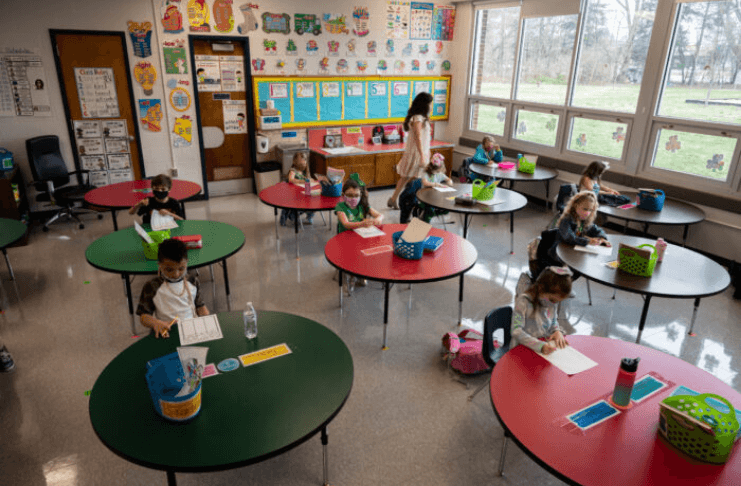Jon Cherry/Getty Image
Normally, sitting on my front porch on a crisp autumn morning means listening to elementary students across the street running around on the playground and laughing while making leaf piles.
This year, though, it means listening to the beeps and clangs of a construction crew while the elementary school is being rebuilt. In 2022, the residents of Lansing overwhelmingly voted to pass a bond to provide funds to demolish and rebuild four elementary buildings in the district. Doing so meant our property taxes would remain at a level set by a previous bond (making the 2022 approval a 0 mill increase).
On Nov. 5, Michiganders will go to the polls to vote for the next president of the United States, members of Congress, state legislators and local officials. Alongside these important elections, many Michigan voters will also decide whether or not to approve millages for their local public schools. While tax dollars do go to fund our public schools, only a very small portion of those funds can be used on capital infrastructure, meaning schools must pay for projects like construction, equipping schools with updated technology and safety entrances, updating HVAC systems, etc. through voter-approved tax increases.
The two types of tax increases on the ballot are for school bonds (a loan) and sinking funds (a pay-as-you-go savings account). These tax increases ask voters to approve an increase to property taxes in what is referred to as a mill increase/millage.
A mill is equal to 1 dollar for every $1,000 of taxable value. For example, if my district asks for a 2 mill increase to support the construction of a new school building and the taxable value of my house is $200,000, I would pay an additional $400 a year in property taxes.
The mills required are dependent on the extent of the proposed project and the taxable value of property in each district. Some districts are asking voters to approve maintaining or extending current millage rates (a 0 mill increase), some districts are seeking increases under 1 mill, and others are asking for more mills to support projects like building new early childhood centers.
While convincing voters that it’s a good time for a tax increase may seem odd in the current economic climate, school bonds and sinking funds are the only way schools are able to pay for projects such as media centers, auditoriums, athletic fields and science labs due to the nature of our school funding structure. These projects benefit both the students and communities that our public schools serve, and research links the quality of school facilities to better student outcomes.
Historically, Michigan voters have been very supportive of these tax requests for public services such as libraries, police and roads. However, approval for school millages has decreased recently, with about half of school bonds being voted down in 2024 thus far. According to recent analysis from Bridge Michigan and Gongwer News Service, voters are less likely to support school bonds at this time due to the complicated nature of Michigan’s school funding system and a lack of connection to the school district.
Voters can visit their local school district website to find out if they will be voting on school millages at the ballot box next month. And for those of us who are voting on bonds, schools post bond details including the tax requirement and plans for use of the funds. With Election Day quickly approaching, it is important for all of us to understand what is on our ballot and educate ourselves on not only the candidates, but on the needs of our schools as well.
While I very much look forward to the literal settling of the dust outside of my house, I know that it will be even sweeter to hear the sounds of the elementary students returning to school knowing they are now in an environment truly conducive to their learning.
GET THE MORNING HEADLINES.

